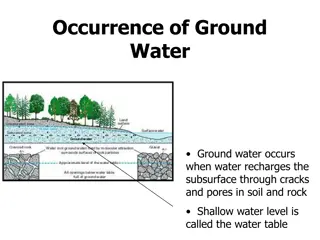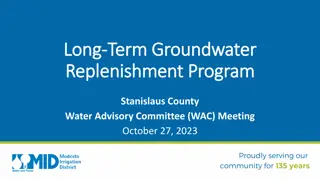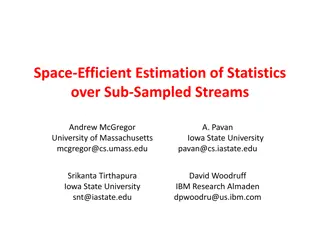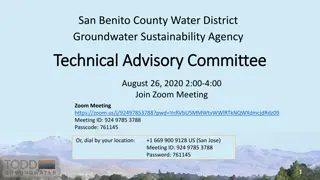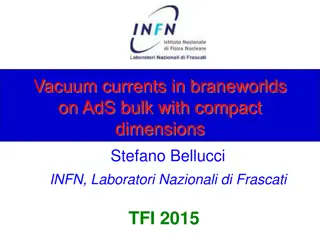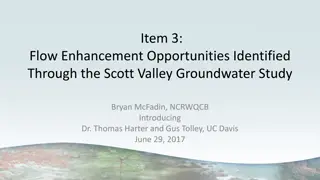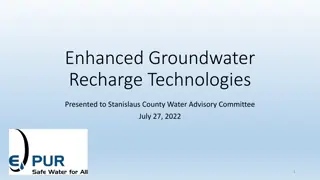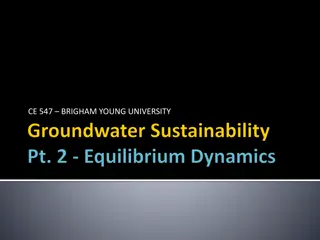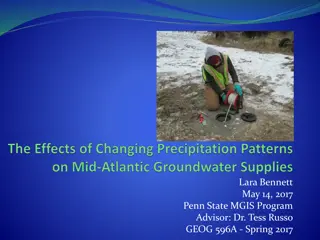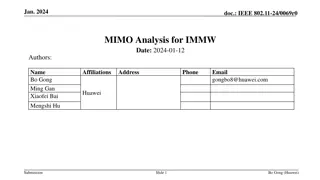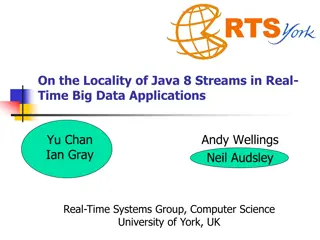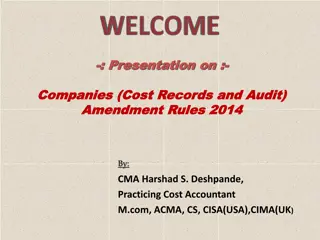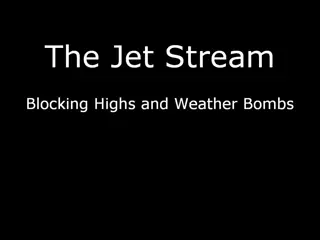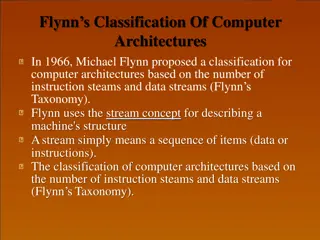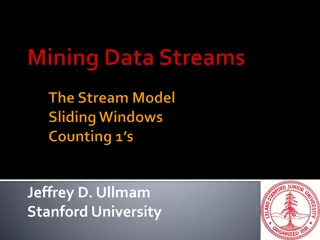Groundwater Response to Stream Stage Fluctuations in Regulated Streams
Research on groundwater response to stream stage fluctuations in regulated streams, exploring the interaction between surface and groundwater, induced infiltration rate estimation, and distinguishing vertical from lateral stress.
Download Presentation

Please find below an Image/Link to download the presentation.
The content on the website is provided AS IS for your information and personal use only. It may not be sold, licensed, or shared on other websites without obtaining consent from the author.If you encounter any issues during the download, it is possible that the publisher has removed the file from their server.
You are allowed to download the files provided on this website for personal or commercial use, subject to the condition that they are used lawfully. All files are the property of their respective owners.
The content on the website is provided AS IS for your information and personal use only. It may not be sold, licensed, or shared on other websites without obtaining consent from the author.
E N D
Presentation Transcript
Groundwater response to stream stage fluctuations in a regulated stream, New Martinsville, WV Madan Maharjan Joe Donovan West Virginia University
Research interest Regulated streams are also transportation corridors for rail as well as industrial areas and tend to be sites of groundwater contamination, including some public water supplies. If the management of dams alters or controls groundwater flow here, then we may benefit from understanding how these controls work.
Background b a
Purpose To develop an analytical model that explains spatial and temporal aspects of surface-and groundwater interaction during an annual cycle of stream stage fluctuation; To estimate induced infiltration rate and bank storage using this model; and To distinguish vertical (i.e. recharge) from lateral (i.e. induced infiltration) stress.
Hypothesis Lateral (stream-induced) stress is more prominent than vertical stress (recharge) during high flow periods and vice-versa in low flow periods. Approach A convolution-integral method was written in MATLAB to simulate aquifer heads in response to stream stage fluctuations (Hall and Moench, 1972).
Assumptions Aquifer has a negligible head gradient towards a pumping well; Stream stage fluctuation was the main and only source of aquifer head fluctuation; End of the baseflow recession was at steady state condition; Recharge from precipitation was uniformly distributed.
River stage and well heads across the dam Negative correlation High flow period Low flow period
Observed and modeled well heads across dam Vertical and lateral infiltration Lateral infiltration only Vertical infiltration Vertical infiltration and lateral groundwater flow from upper pool
Observed and modeled well heads in the lower pool 50 cm 182.15m 20 cm 181.7m
Bank storage and seepage rate in the upper pool Inflow into aquifer Outflow from aquifer
Bank storage and seepage rate in the lower pool Storms Outflow period Low flow period Inflow period High flow period
Limitation of the model Estimated values could differ significantly from the actual values, in settings where significant regional gradient and/or aquifer heterogeneity are present; and the stream partially penetrates the aquifer.
Conclusions 1. Stream stage fluctuations exerted greater control over groundwater levels than recharge especially during high flow periods; 2. Anthropogenic activities could change groundwater flow paths and velocity; and 3. This method could be a useful tool identifying potential threats to water quality and planning future well field expansion or management.
Thank you Thank you Questions
Method H=Stream stage h= Aquifer head D= Aquifer diffusivity Erfc=Complimentary error function V=Unit-width saturated aquifer volume v=Bank storage Q=Seepage rate (1) h(x,t)= H* erfc ( (2) h(x,t)= (3) V= (4) v= V*n (5) Q= (6)




